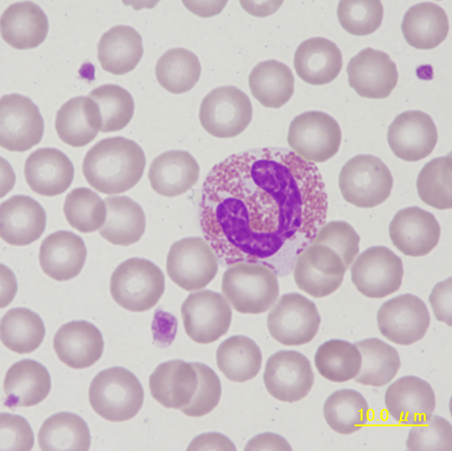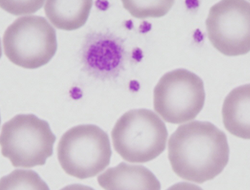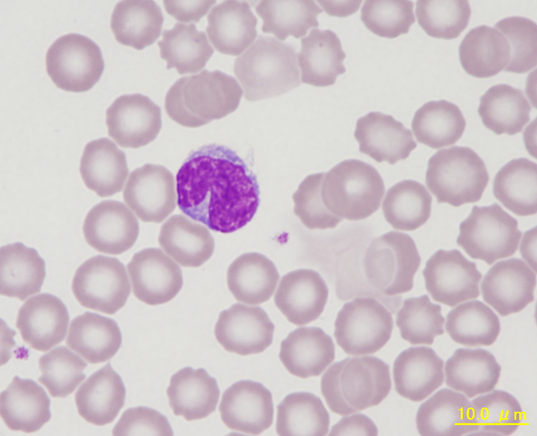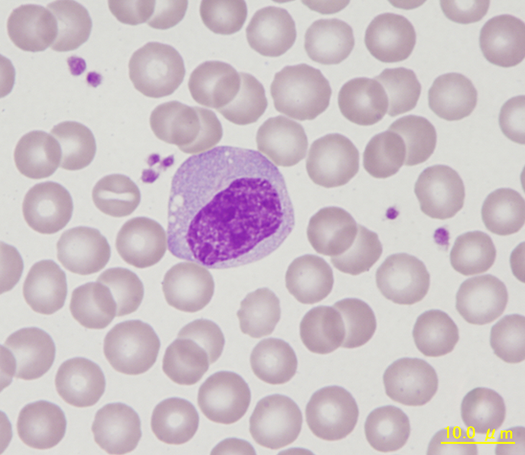Scientific Image Gallery
Welcome to our Scientific Image Gallery. Here you can find real-life examples of cell images, mostly (but not only) from peripheral blood films, that illustrate typical morphologic characteristics pointing to specific conditions or disorders. This constitutes their diagnostic value.
Click on an image to enlarge it and display a short description.
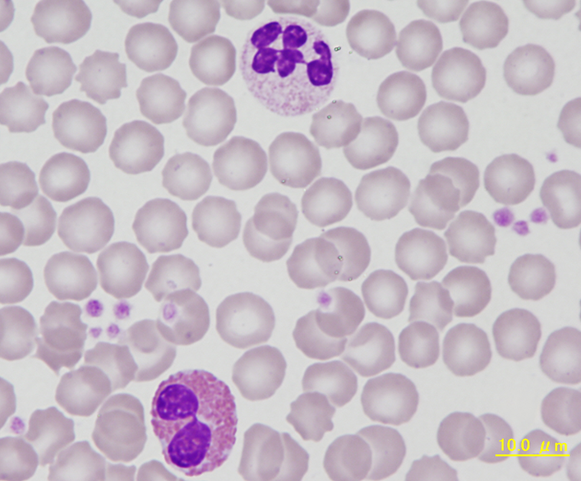
Eosinophils and neutrophils are somewhat harder to distinguish compared to other mammalian species due to their similar size and the presence of azurophilic granules in both cell types. Eosinophil granules are about double the size and rounder than those of neutrophils and show a brighter yellow-red colour. The cytoplasm of eosinophils is slightly more grey-blue and the
eosinophil nucleus is not as condensed or segmented.
<p>Eosinophils and neutrophils are somewhat harder to distinguish compared to other mammalian species due to their similar size and the presence of azurophilic granules in both cell types. Eosinophil granules are about double the size and rounder than those of neutrophils and show a brighter yellow-red colour. The cytoplasm of eosinophils is slightly more grey-blue and the </p> <p>eosinophil nucleus is not as condensed or segmented. </p>
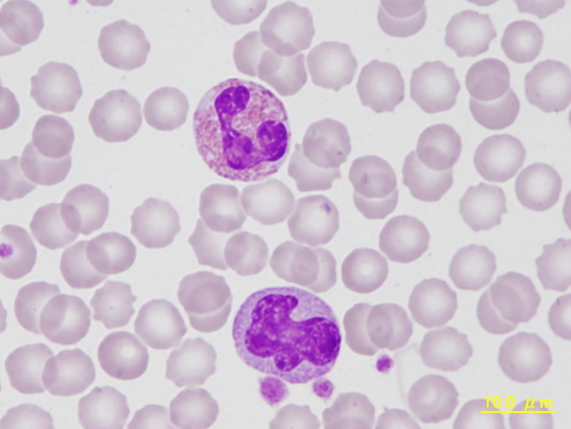
Eosinophil with red staining granules and poorly segmented nucleus at the top. Monocyte below showing the characteristic amorphous nucleus, greyish-blue cytoplasm and fine granules.
<p>Eosinophil with red staining granules and poorly segmented nucleus at the top. Monocyte below showing the characteristic amorphous nucleus, greyish-blue cytoplasm and fine granules.</p>
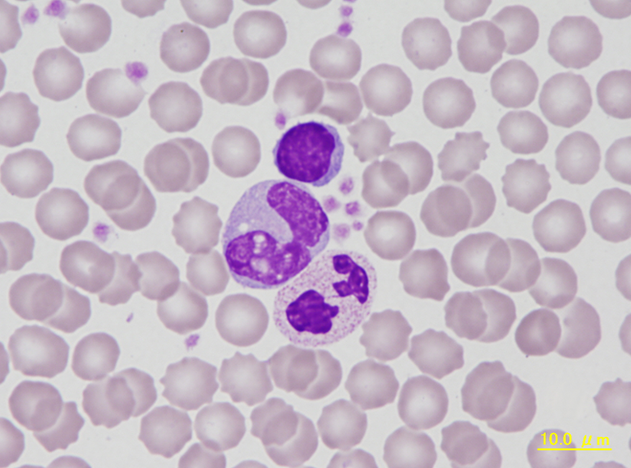
Typical pictures of a lymphocyte, monocyte and a neutrophil (top down). In the monocyte vacuoles overlap with the nucleus leading to the appearance of holes in the nucleus. The segments of the neutrophil nucleus are linked through nuclear filaments.
<p>Typical pictures of a lymphocyte, monocyte and a neutrophil (top down). In the monocyte vacuoles overlap with the nucleus leading to the appearance of holes in the nucleus. The segments of the neutrophil nucleus are linked through nuclear filaments.</p>
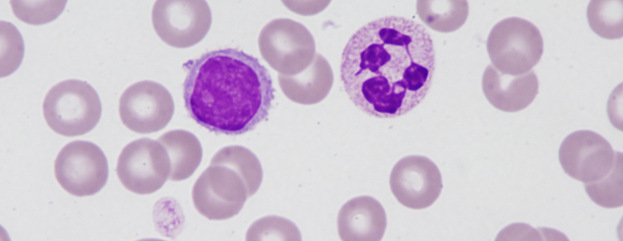
Lymphocyte to the left and segmented neutrophil to the right. Note the different chromatin patterns of the nuclei of the two cell types.
<p>Lymphocyte to the left and segmented neutrophil to the right. Note the different chromatin patterns of the nuclei of the two cell types.</p>
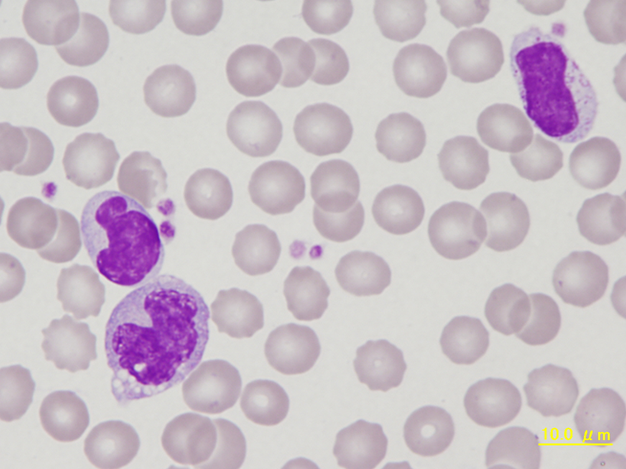
The lymphocyte on the upper right shows many azurophilic granules. Adjacent to the lymphocyte on the left there is a monocyte containing numerous vacuoles.
<p>The lymphocyte on the upper right shows many azurophilic granules. Adjacent to the lymphocyte on the left there is a monocyte containing numerous vacuoles.</p>
